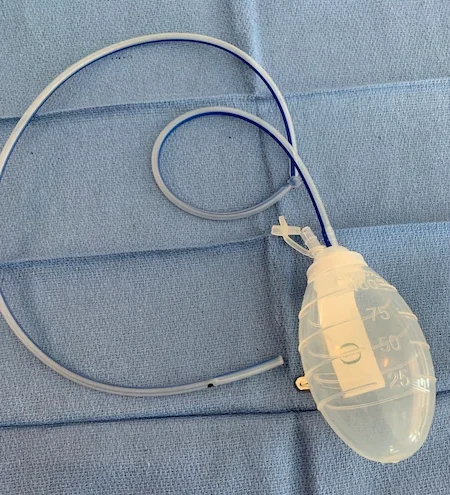Drain Care/Log
Drains
You may have drains placed during surgery. These drains are generally left in place from 1-2 weeks depending on the type of surgery and how much fluid your body is making. Since you will be discharged home with these drains in place, the following information may be helpful to you understanding their purpose and how to care for them.
Drain placement is necessary whenever a space is made in the body that normally is not present. In order to heal properly, fluid that the body makes during healing is removed by the drain allowing you to heal and reducing fluid collections and infection risk. The drain is attached to a bulb (collection device) that will initially look bloody then will turn slowly into a clear yellow color. Dr. Rednam likes the drainage to be less than 30 ml/day x 2 days before the drains can be removed. The specific type of drains Dr. Rednam uses are able to removed in the office and are pain-free.
Caring for your drain at home will involve the following:
- Stripping the tubing to help move clots and prevent the drain from getting stopped up. With one hand stabilize the drain and with the other carefully pull towards the bulb to empty the tubing.
- Empty the drain 3 – 4 times a day and record the amount of output each time.
- Caring for your insertion site – clean the area where the drain exits your skin daily with antibacterial soap. Keep clean and dry. It is normal for this area to get red and irritated which will resolve once the drain is removed. If however the redness spreads beyond just around the drain or becomes very painful please contact us as this could be a sign of early infection.
- If you have more than one drain, make sure to measure and record each one separately.
Dr. Rukmini Rednam has either authored or reviewed and approved this content.
Page Updated:
